Something’s going very green in the French city of Nantes, as Judith Schrut discovered on her recent visit to this welcoming and eco-friendly gem on the western banks of the Loire.
I’d like to think that ‘sustainable travel’ is not about loud, grand, one-off gestures but the ongoing, conscientious and active choices we make about our holidays. This includes where and how we go, what we pack and everything we do when we get there. Naturally, it’s easier when a travel destination has a matching approach, but that’s where best intentions can sometimes hit a non-biodegradable brick wall.
So, finding a destination which dovetails with one’s beliefs feels like an especial joy. I was delighted to discover Nantes, the sixth largest city in France, is one of those rare and remarkable places.
For many years, Nantes has been putting into practice a long-term plan for environmentally friendly, sustainable development, from extensive recycling, waste reduction and use of renewable energies to deep investment in public transport, green spaces, eco-building and local business. Nantes is a partner in eco-tourism’s ‘Green Passport’ scheme, which promotes hotels, restaurants, shops and other venues with sustainable practices.
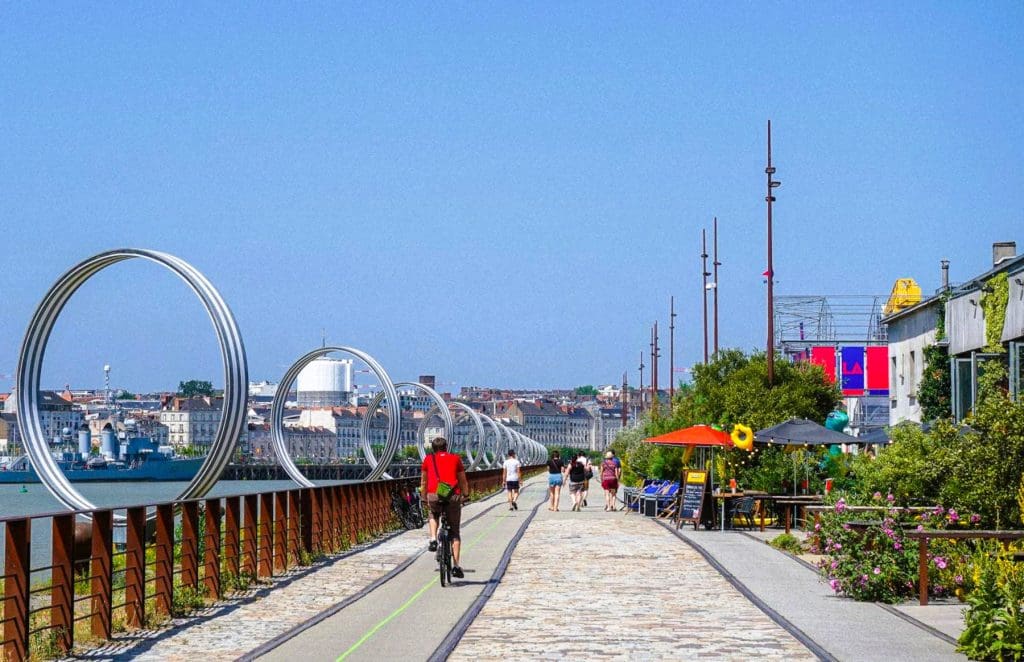
Walk the Green Line
Nicknamed ‘the Green Wonder of Western France’, Nantes’ green-ness is apparent the moment you arrive, with posters everywhere inviting you to walk the Green Line. Yes, dear reader, this is an actual line of bright green paint 20 km (12 miles) long, which weaves its way around the city, welcoming and guiding you on an 80-stop tour of Nantes’ art, nature and history. For first time visitors like myself, the Green Line lends a ‘Wow’ factor I’d love to see in more places. Stick to the Green Line, it’s telling me, and in addition to a free self-guided tour of must-see sights and easy achievement of those 10,000 daily steps, you’ll never get lost.
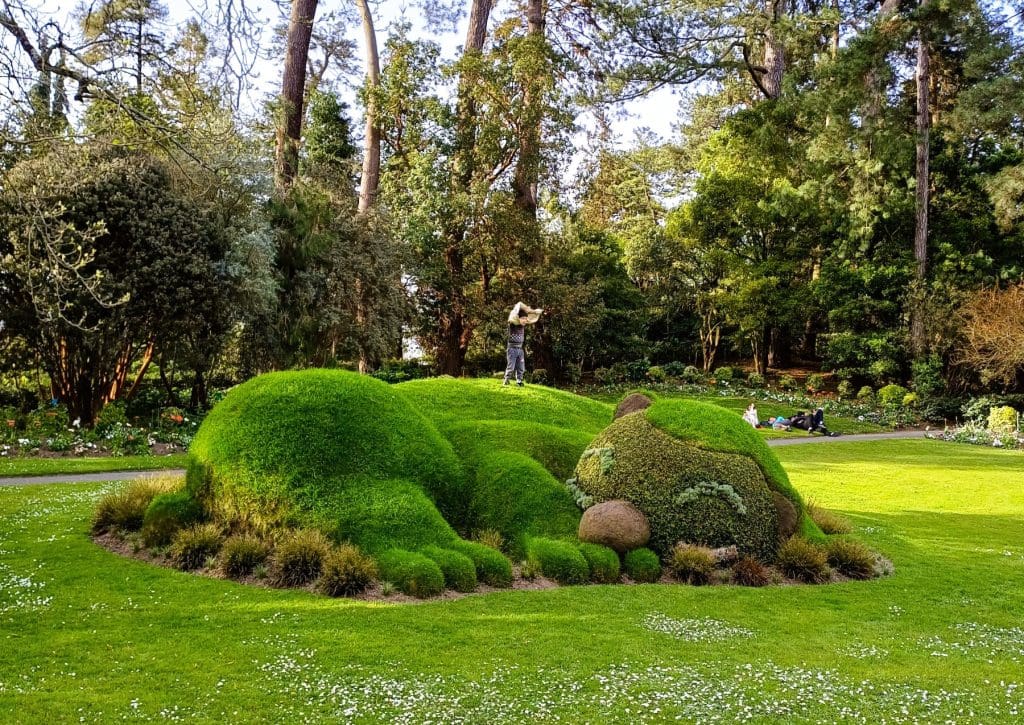
Smell the Roses
Nantes’ Green Line is just the start— the city’s gone green in dozens of other ways. As part of its ‘Nature in the City’ strategy, Nantes has been actively working to protect and expand its natural environment and realise its goal to “make the city a garden.” Parks and green spaces abound. In numbers, that’s 141 square metres of vegetation per inhabitant, 210 km of waterside walks and over 100 parks and gardens. In 2013 Nantes became the first city in France to be named a European Green Capital; more recently it’s been awarded the title of Sustainable Innovative Destination.
I found it impossible to choose favourites from Nantes’ fantastic variety of parks and green spaces. There’s Parc Beaulieu, a wildlife refuge, rare remaining Loire ‘wet meadow’ and newly-opened treetop adventure playground. The city’s botanical garden, Jardin des Plantes, is splendidly filled not just with thousands of exotic plants but climb-on-me art, 19th century tropical greenhouses, picnic areas and the charming Orangerie Café. Île de Versailles is an artificial island where former workshops for naval tanners and carpenters have been turned into magical Japanese gardens, complete with arched bridges, mini-pagodas, waterfalls and a Zen forest.
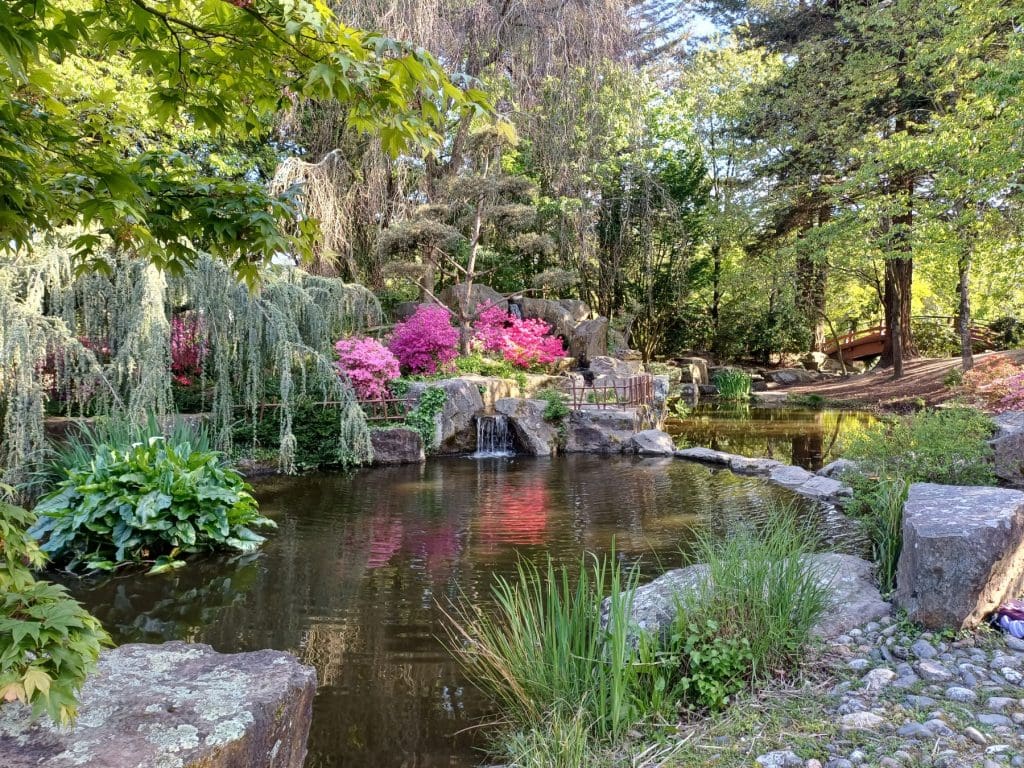
Celebrate (Recycled) Urban Spaces
It’s not just in Nantes’ parks and gardens where you’ll find a city working hard to be green and seen, to transform itself into a genuinely sustainable place to live, work and enjoy.
Throughout the city urban spaces are being recycled rather than destroyed, redeveloped into vibrant living, public and pedestrianized areas. One major project is changing the Anne de Bretagne Bridge, which links Nantes’ inner island to its mainland, from traffic-snarled highway to garden walkway and vast urban park, a place to stroll, play and literally smell the flowers. Long stretches of the adjoining Loire waterside are being filled with plants, street furniture, art and one thousand trees.
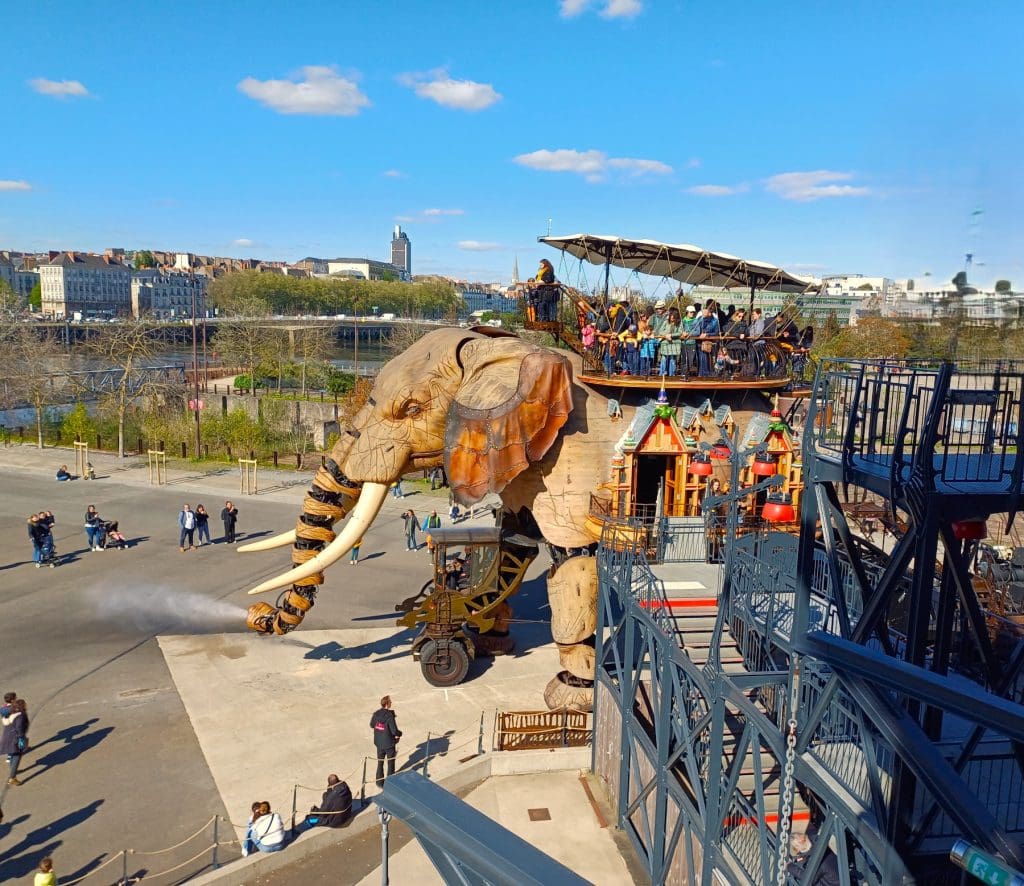
Explore the Isle of Nantes…and Ride the Elephant!
To discover the most impressive piece in Nantes’ urban transformation, head to the Loire shoreline and cross the Schoelcher Footbridge to the city’s island, the Île de Nantes. Historic home to Nantes’ once-mighty shipyards and chief port of the transatlantic slave trade, these now-abandoned docklands have been turned into the vibrant Parc des Chantiers.
Once on the island, turn right for its top attraction, Les Machines l’île, a mechanical fantasy world honouring Nantes’ famous son, science fiction writer Jules (20,000 Leagues under the Sea) Verne. Here you can hop on the Carrousel De Monde Marins, a three-tiered 25-metre underwater-themed merry-go-round, and ride your choice of weird and wonderful Jules Verne-ish sea creatures, including a flying boxfish, a giant crab and a reverse rotating squid. This is not just for kids— the day I visited, raucous laughter from a large group of French seniors on a social outing filled the air and all 35 beasts of the Carrousel.
Next stop, the Grand Éléphant! 9.50€ will buy you a memorable 30 minute ride atop this 39-foot high, 48-ton mechanical pachyderm, which tramps the Isle from morning to night, huge trunk waving, snorting, trumpeting and spraying water at adoring crowds as it moves on its four gigantic legs.
You’ll find loads more inventive projects on the Isle worth checking out: a ping-pong park, basketball trees, performing spaces and outdoor art, a lunar playscape where you can walk, leap and jump on the ‘moon’ and bounce on its craters, and Le Hangar à Bananes— the Banana Hanger— a gallery recycled from former banana and pineapple warehouses. You’re guaranteed an excellent lunch at nearby Cantine des Voyages, a food hall with bars, eateries and walk-through vegetable garden, where sculptor Lillian Bourgeats has bequeathed a pair of giant rubber garden boots.
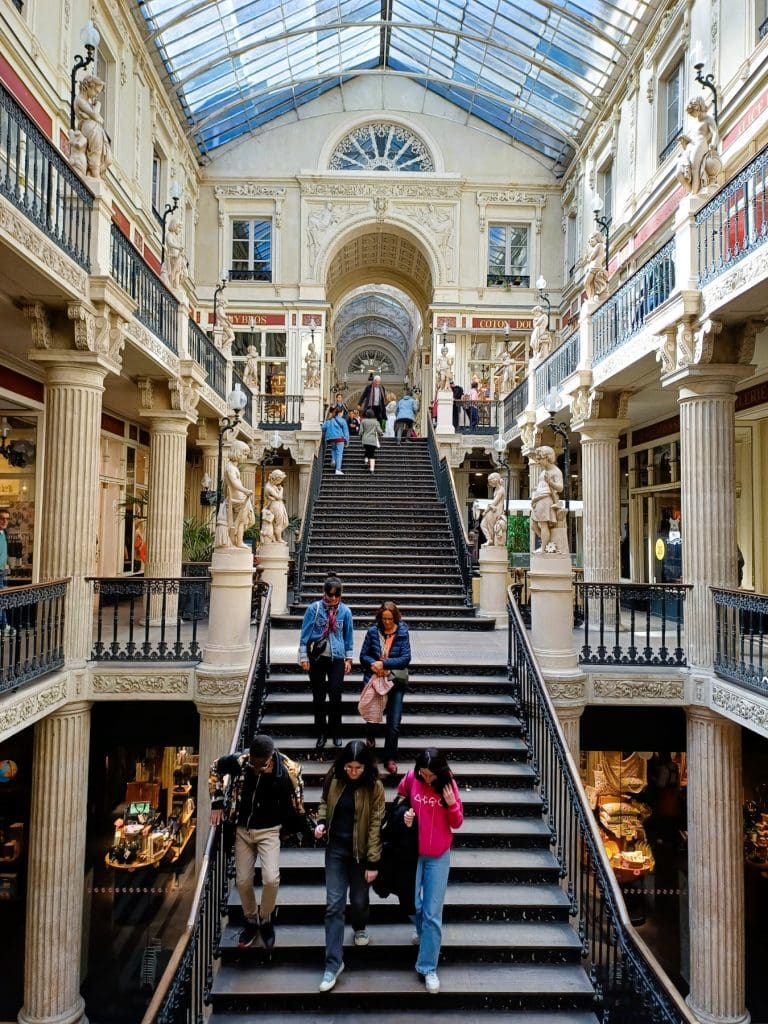
Lose Yourself in the City’s Historic Heart and Enjoy Free Travel at Weekends
Nantes’ centre is one big historic heart, rich in culture, art and architecture. Its oldest and most popular attraction is the Château des Ducs de Bretagne, a resplendent 15th century Renaissance castle made of luminous white stone. There’s the Bouffay Quarter, a medieval maze of streets and timber-framed buildings, and the Graslin district, with its monumental fountains, neo-classical theatre and Passage Pommeraye, a classy three-story shopping arcade as well as a stunning example of 19th-century architecture.
Nantes puts its money where its mouth is with massive support for low impact travel throughout the city. Public transport is abundant, efficient and cheap. And all of it— that’s trams, trains, buses, riverboats— is totally free on weekends. Worth a look whether you’re travelling or not, Nantes newly-rebuilt central train station is filled with art, plants, innovative architecture and breathtaking city and river views from its lofty glass-domed mezzanine.
If you’re in Nantes for a day or more and love a bargain, get yourself a 24/48/72 hour or 7-day Nantes Pass. This incomparable investment (27-75€) gives you free entry to 50+ attractions including the Château, all museums, unlimited public transport (not just bus and tram travel but bike and kayak rental, river cruises and a ride on Nantes’ endearing Petit Train), shop discounts and loads of freebies such as aperitifs, coffees, wine tasting and a packet of seeds from the Jardin des Plantes.
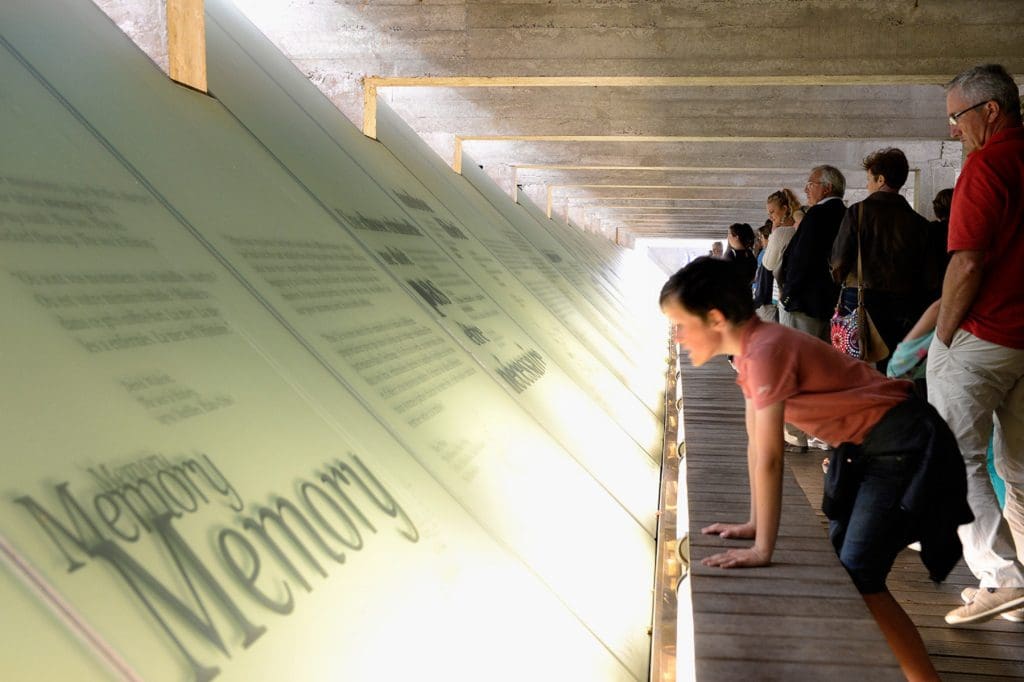
Look the Darker Side of Nantes’ History Straight in the Eye
Nantes’ profitable past as a major hub in the transatlantic slave trade has not been forgotten. Instead, modern Nantes consciously chooses to look this darkest part of its past straight in the eye. The city’s stunning Memorial to the Abolition of Slavery opened in 2012. This 1.5 km site is a moving tribute to those who endured or fought human slavery in all its forms throughout the world. It’s built on the Quai de la Fosse, the same spot which launched hundreds of slave-trading ships carrying over 500,000 humans from the 17th to mid-19th centuries. At street-level is a walkway lined with 2,000 plaques bearing names of ships which left Nantes bound for African and American ‘trading’ points; below is a haunting underground passage with a stark display on the slave trade and a huge glass wall showing the Universal Declaration of Human Rights in 47 languages.
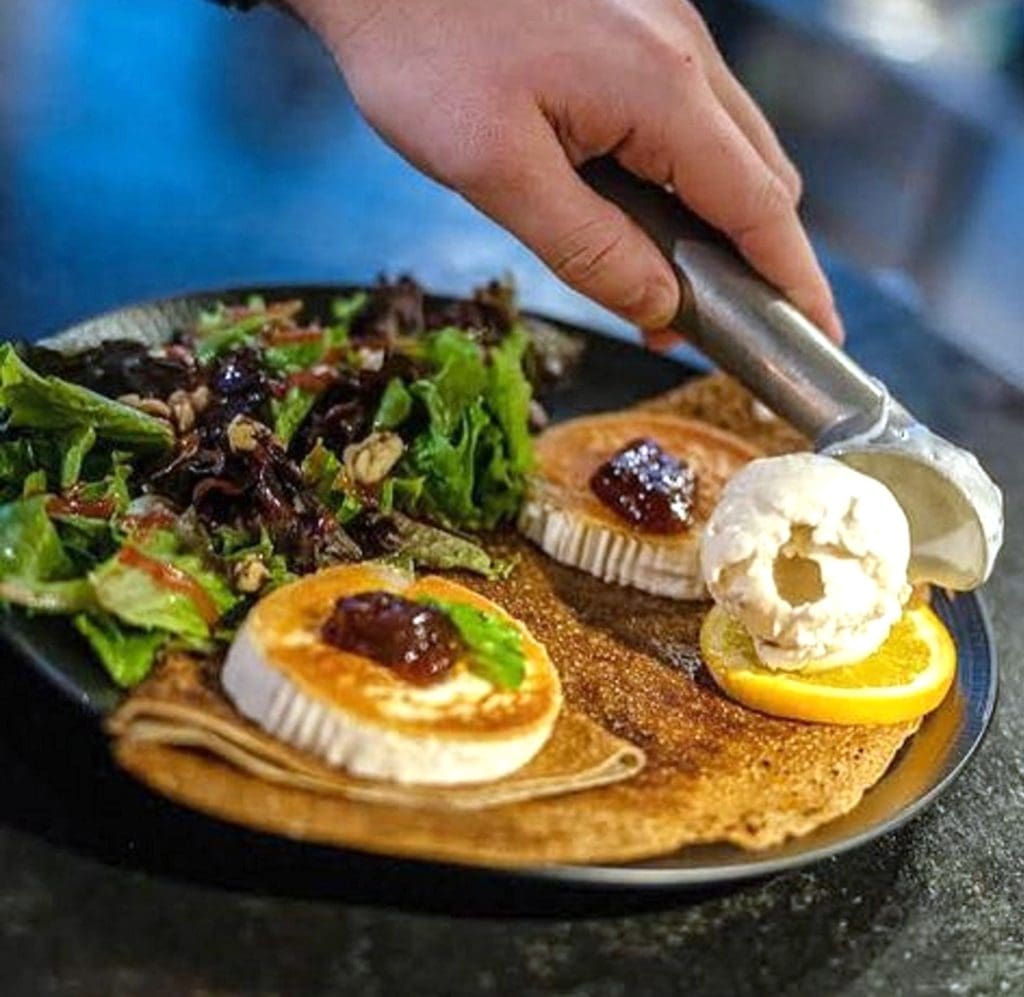
Eat Your Heart Out (Part 1): Many Flavours, Infinite Eateries
We’re in mid-France so it’s no surprise that food and drink play an outsized part in daily life. Nantes has a growing reputation for its gastronomy and is a hub for young and talented chefs. To get the most from your mange, download the free Tables de Nantes annual guidebook, packed with detail and mouthwatering images of Nantes’ eateries, vineyards, festivals, tastings and culinary news.
Regional specialties draw inspiration from both land and sea, with an emphasis on sustainability and keeping things local. From the sea come gigantic clams and oysters, eels and seaweed; from the land there’s Curé Nantais, a soft cow’s cheese with a distinctive yellow rind, tender Challans duck, Muscadet wine, a ton of butter and an abundance of produce including a mind-boggling variety of onions.
Sitting on the cusp of Brittany as it does, Nantes takes its crêpe legacy very seriously. There’s a crêperie round every corner: I counted 12 within a few metres of each other in the Bouffay Quarter near my AirBnB. This fascinating area behind the Château is a maze of narrow streets and medieval buildings, packed with lively bars and restaurants.
Nantes’ crêpes and their savoury sisters, the galettes, are much more than mere pancakes on a plate, they are works of art. After several samplings in the name of journalism, I can reveal my top choice to be ‘Galette Super Compléte Jambon’ from Crêperie St Croix. For 13.90€, you get breakfast, lunch, and dinner on an oversized plate, a perfectly browned, organic buckwheat galette bursting with Nantaise ham, Curé Nantais, mushrooms, mache, confit onions, a whole roast tomato, and a poached egg. Add a bowl or two of St Croix’ homemade cider and you’ll soon be away with the fairies.
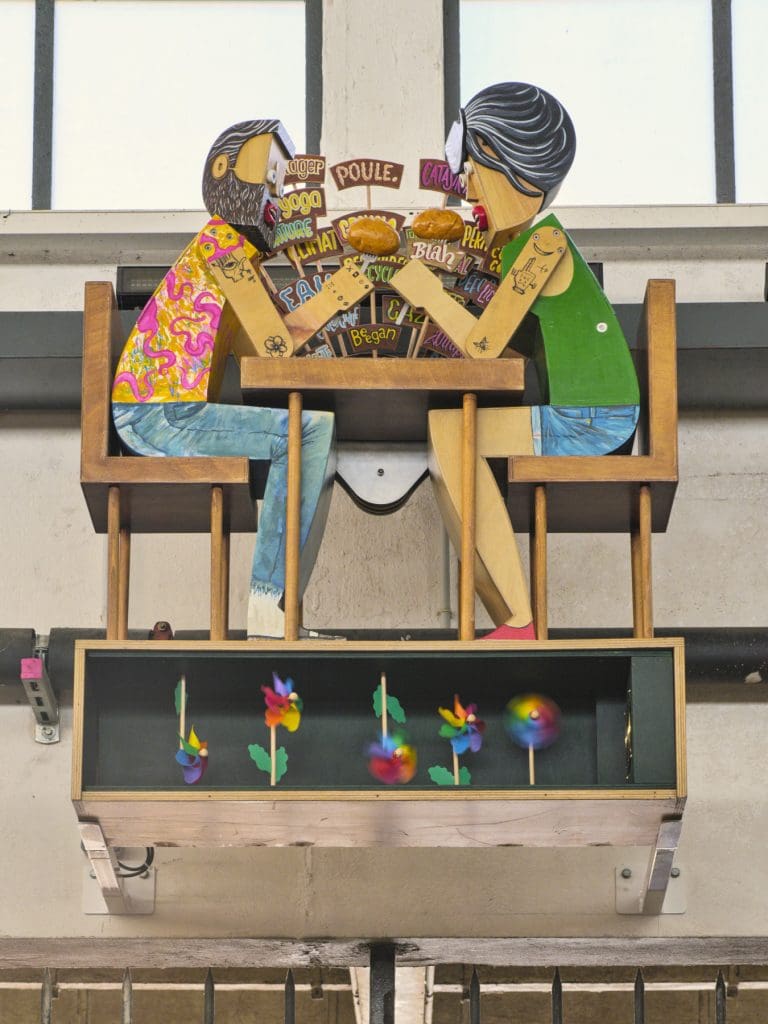
Eat your Heart Out (Part 2): DIY at Talensac
While I’m on the important subject of food, Nantes’ fabulous Talensac Market deserves special mention. Whether you’re self-catering or just epicurious, this historic daily indoor market is a must for any dedicated locavore. From some 200 stalls comes a colourful array of local produce and specialities from around the region including some irresistibly fragrant cakes and bakes. Don’t miss Gavin Pryke’s unique foodie shop signs, 10 clever mechanical ‘automatons’ perched above the market stalls for amusement and delight of shoppers who happen to look up.
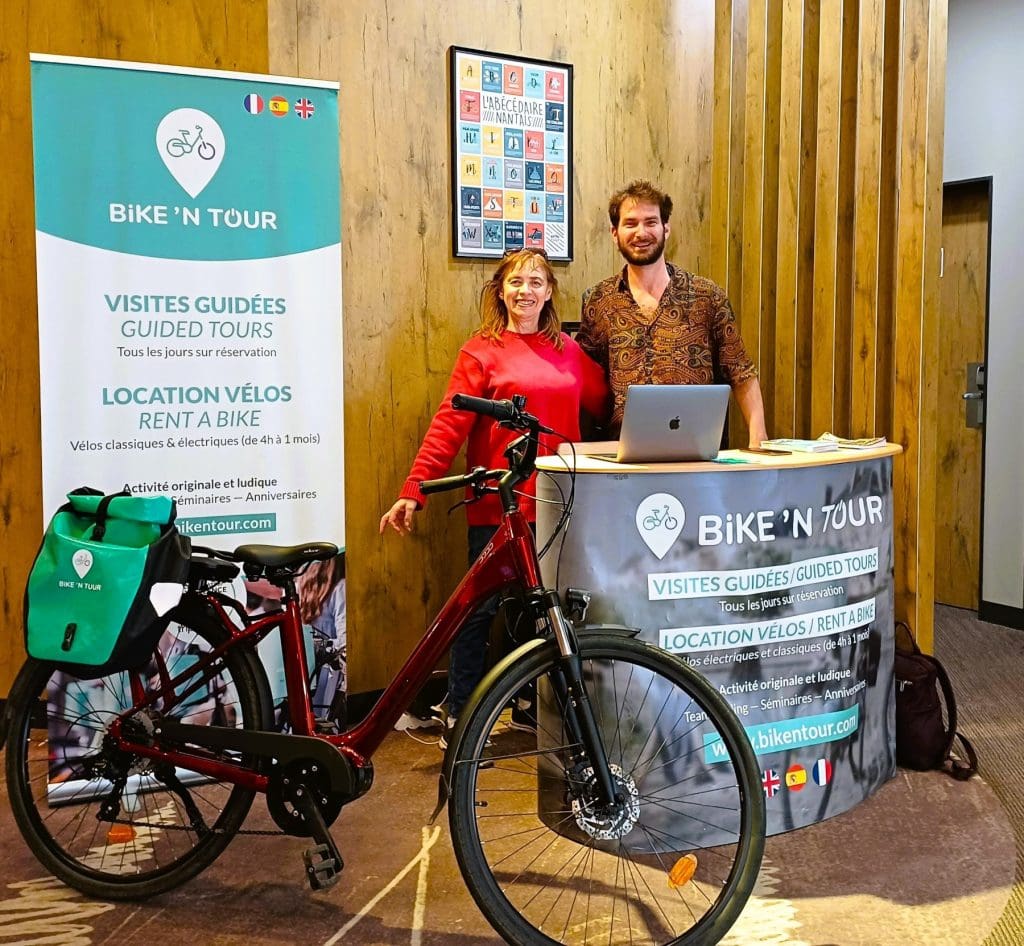
Accueil le Velo! (Welcome, Bikes)
Nantes is justly proud of its travel motto: “Any way you choose will never be the wrong way!” As we’ve seen, the city has many options for sustainable travel including walkways, trams, river boats, kayaks and mechanical elephants.
Nantes is also one of the most bikeable cities in Europe, and extends a special welcome to cyclists. Top sights and attractive routes can all be easily enjoyed from the seat of a bike. There are extensive bikeshare schemes, bike lanes and bike shops galore. Nantes sits at the crossroads of three main French cycle highways; the city and surrounding region boast 794 km of cycle paths, many along the banks of the Loire.
I arranged to meet Antoine, who runs Bike’n Tour from its cosy HQ in central Nantes, living his passion for Nantes’ environment and heritage by offering daily e-bike tours of the city as well as regional wine-tasting e-bike tours and bike rentals. Antoine tempted me to “discover Nantes and its secrets” on one of his e-fleet. This turned out to be a delight and an absolute highlight of my trip. Admittedly, I strayed off the Green Line and got lost a lot. The city’s bigger than I’d realised and has plenty of hills, but the freedom of cycling its plentiful bike lanes and car-free routes was utterly joyful.
Travel to Nantes takes 5½ hours by Eurostar and TGV from London St Pancras, 1½ hours by air from London Stansted, or overnight ferry and rail Portsmouth/St Malo/Nantes.
Judith was a guest of Voyage à Nantes and Bike’n Tour.
For more information about Nantes click here
Image credits: Cover, Jean-François Fourtou, L’enfant Hybridus, Le Voyage à Nantes 2024©Martin Argyrogloc; Automates à l’unisson by Gavin Pryke, Le Voyage à Nantes©Philippe Piron. All other images, Judith Schrut.